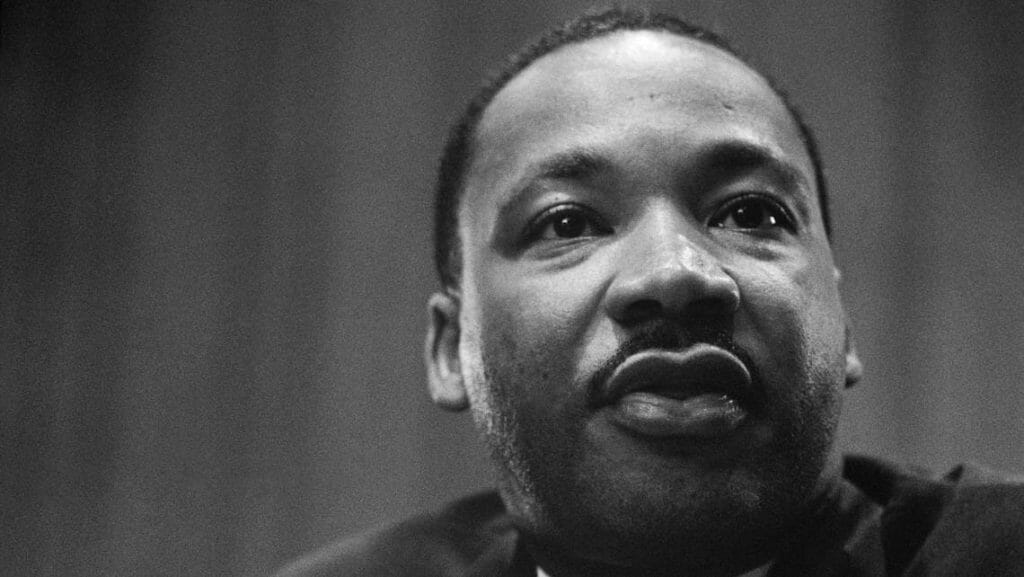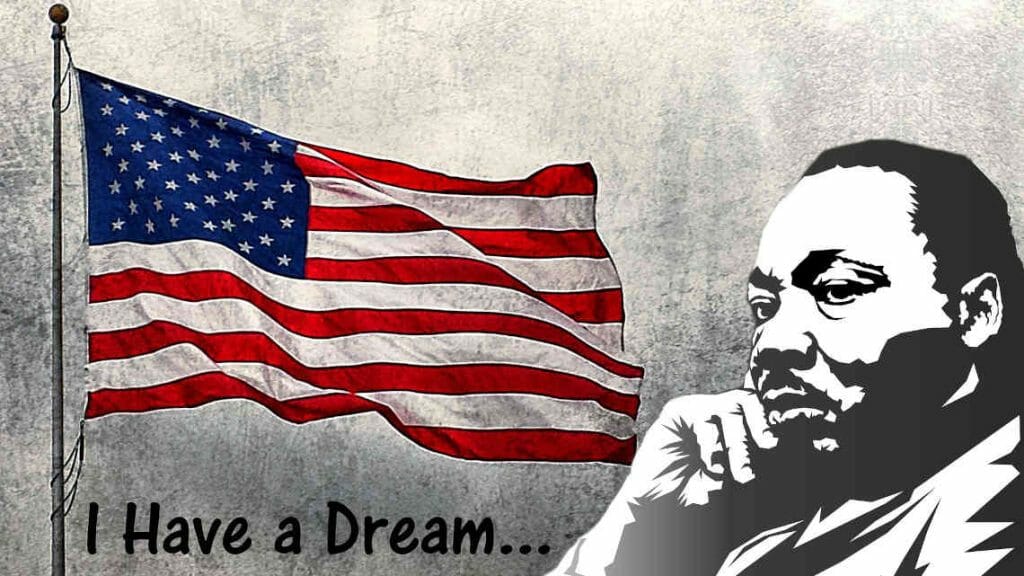
Holding Inspirational Presentations Like Martin Luther King!
When it comes to captivating, inspirational presentations, one name is inescapable: Martin Luther King. He is considered an icon whose impressive oratory skills not only set historical changes in motion but also serve as a source of inspiration for modern presentation techniques.
In today’s article, we will show how you too can deliver similarly captivating presentations like Martin Luther King and apply his timeless techniques.
Who is Martin Luther King?
Martin Luther King Jr. (1929-1968) was an American civil rights activist and one of the most important leaders of the American civil rights movement. He gained worldwide fame for his nonviolent struggle against racial segregation and the discrimination of African Americans in the USA.
King delivered a series of iconic speeches, including his famous “I Have a Dream” speech during the March on Washington for Jobs and Freedom in 1963. His rhetorical skills, commitment to social justice, and advocacy for nonviolent resistance have made him an inspirational figure. He remains today a symbol of change and hope.
Why King’s Speeches are Important for the World of Presentations
Martin Luther King’s presentation skills were particularly marked by his impressive ability to move people with his words and passion. His speeches were not merely off-the-cuff remarks but passionate calls for change from the depths of his heart.
King mastered the art of rhetoric and skillfully incorporated his convictions into his speeches. He pursued clear objectives. These words, filled with emotions and energy, captivated his audience and inspired it. Through the skillful use of metaphors, repetition, and similar elements, he could further reinforce and sustainably lend power to his messages. Additionally, he built an emotional connection with the audience.
His presentation skills are still a model for speakers and presenters worldwide, who learn from his ability to not only convey information but to touch hearts and instigate change.
7 Techniques to Present Like King

Martin Luther King didn’t use supportive PowerPoint presentations for his speeches. Nevertheless, his timeless techniques can also be extremely effective when applied to modern PowerPoint presentations.
To give similarly captivating presentations, you can refer to the following eight techniques, successfully applied by King.
1. The Art of Storytelling
The power of stories is undeniable, including in presentations. Stories are captivating; they have the power to evoke emotions and create unforgettable images in the minds of the audience. Skillfully integrated into your presentation, they pave the way to your audience.
Martin Luther King strategically used stories to convey his messages. He cleverly connected his concerns with real stories of individuals, creating a personal and emotional connection with his audience.
These narratives conveyed not just information but also evoked empathy and compassion, making his messages even more powerful. He used stories as the foundation of his presentations. This turned Martin Luther King’s speeches into not just lectures, but vibrant experiences that deeply touched the audience. You too can skillfully employ this technique.
Read more about storytelling and storytelling techniques in our article “Storytelling in Presentations.”
2. The Power of Rhetoric
When creating your presentation, don’t just focus on content delivery; also consider how you deliver it. Utilize rhetorical elements, as rhetoric transcends mere information sharing. It influences emotions and stimulates thought.
Martin Luther King was a master of rhetoric. He used techniques like anaphora—the repetition of words at the beginning of successive sentences—to amplify his compelling messages.
Parallelism, the uniformity in sentence structures, also helped him convey his ideas clearly and effectively. With metaphors and vivid language, he created strong mental images in the minds of the listeners, making it easier for them to understand complex topics.
Learn more about rhetoric and the skillful use of rhetorical elements in our article “Speaking Techniques.”
3. Authenticity and Empathy
Emotions and authenticity play a significant role in your credibility when presenting. Martin Luther King shared not just facts but his own feelings, hopes, and dreams. This allowed the audience to identify with his message on a personal level and created credibility.
King’s great skill was in expressing his own emotions in his speeches while simultaneously reaching the emotions of his listeners. His empathy created an atmosphere of understanding and solidarity, allowing the audience to connect more deeply with the content of his presentations.
In your own presentations, also skillfully employ authenticity to better convey and convince with your messages.
4. Clarity and Structure
Martin Luther King masterfully demonstrated the use of clarity and structure. Clear and concise messages allow the audience to grasp the essence of the statements and remember them.
King used simple yet powerful language. His speeches were structured and organized, allowing the audience to easily follow his arguments. He recognized the potential of well-structured speeches and structured his speeches into clearly defined sections that built upon each other.
Adopt these two aspects and skillfully combine them. This will sustainably help in presenting your messages clearly and accessibly for everyone.
5. Visual Elements
Visual elements play a significant role in presentations. Not only the spoken word but also accompanying images, videos, etc., contribute to a better understanding and the reinforcement of your content, making your presentation more varied.
Martin Luther King understood the power of visual metaphors to illustrate his ideas. He used images that were strong and symbolic to substantiate his statements. For instance, he employed the image of the “gilded chains of discrimination” to highlight the inhumanity of racial segregation. These visual elements helped the audience to grasp his messages not just intellectually but also emotionally.
Nowadays, you have the opportunity to project actual images in your presentations. Yet, even through visual metaphors, you can amplify your statements. Make sure to incorporate enough and appropriate visual elements to make your messages memorable.
In our blog, you will find numerous articles on how to visually enhance presentation elements. Feel free to browse around ► To the Blog.
6. Timing and Emphasis

Timing and emphasis are crucial factors in presentations that are often overlooked. They significantly influence the impact of a message.
Martin Luther King deliberately controlled his speaking pace, pauses, and emphases to reinforce his statements. He used pauses to let significant thoughts linger and to encourage the audience to reflect. His emphases directed attention to key words and sentences, making his messages more compelling.
By skillfully combining timing and emphasis, King developed a rhythmic and captivating presentation style. This enabled him to emotionally engage his listeners and draw them into his message.
7. The Power of the Conclusion
A strong conclusion often holds the key to leaving a lasting impact on your audience. Therefore, don’t miss the opportunity to prepare an effective ending during your presentation preparation.
Martin Luther King used his closing sections to anchor his messages in the minds of the listeners. His closing words were often powerful, inspiring, and encouraging. He summarized his main points and highlighted the central message of his speech once again.
But not only that: King often left a call-to-action that motivated the audience to put the ideas conveyed in his presentation into practice. As a result, he was able to leave the audience with a sense of commitment and enthusiasm. His presentations thus became not just moments of listening but calls to action.
For tips on crafting the perfect presentation conclusion, refer to the article “20 Ideas for a Successful Presentation Ending.”
Learn how to incorporate a call-to-action at the end or within your presentations in the article “Call-to-Action – How to Do It Right.”
Conclusion: Inspire Like Martin Luther King With Your Presentations
Captivate your audience with well-thought-out presentations. Apply King’s techniques in your next presentation to skillfully inspire your audience.
Do you have questions about how to start a presentation or about PowerPoint presentations in general? Feel free to contact us via email at [email protected]. We’re here to help!
For professionally designed slide templates to enhance the impact of your presentation, browse through our shop. We offer a wide range of slides on various (business) topics. ►Visit the Shop
You may also be interested in the following articles:




